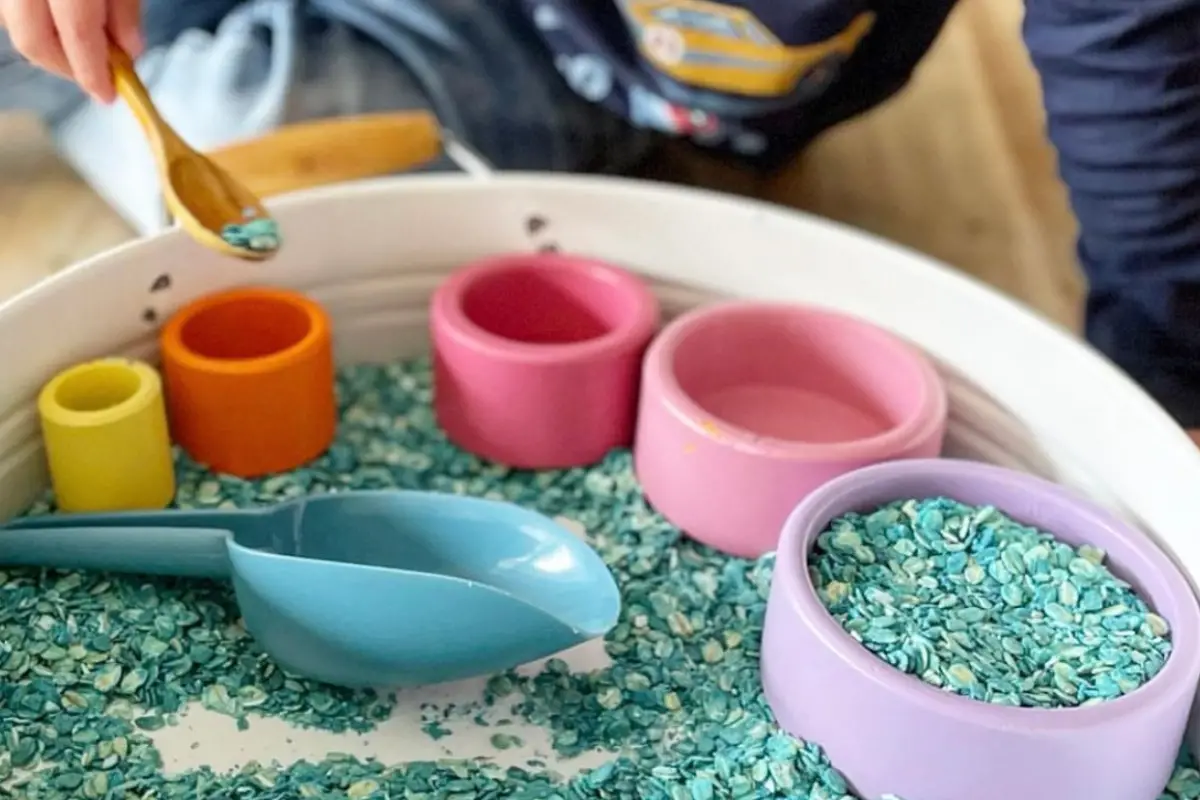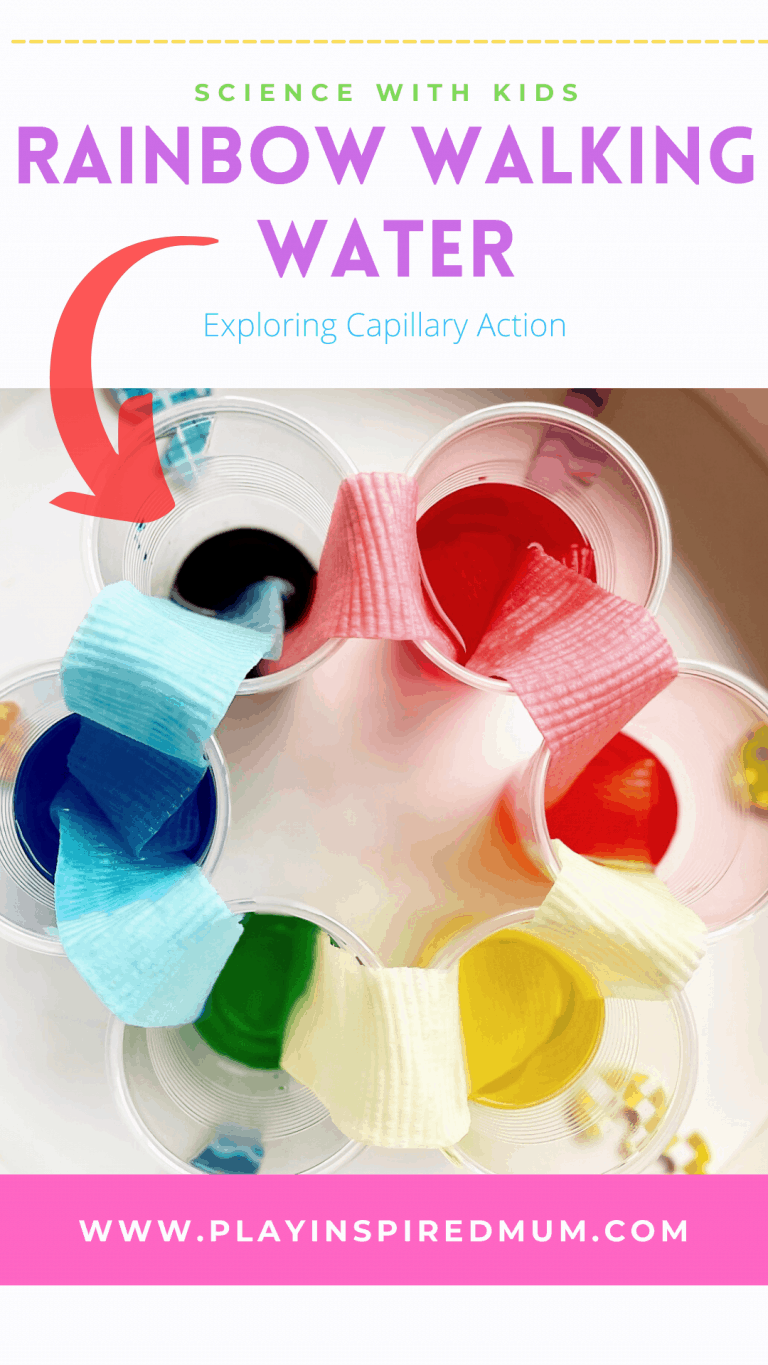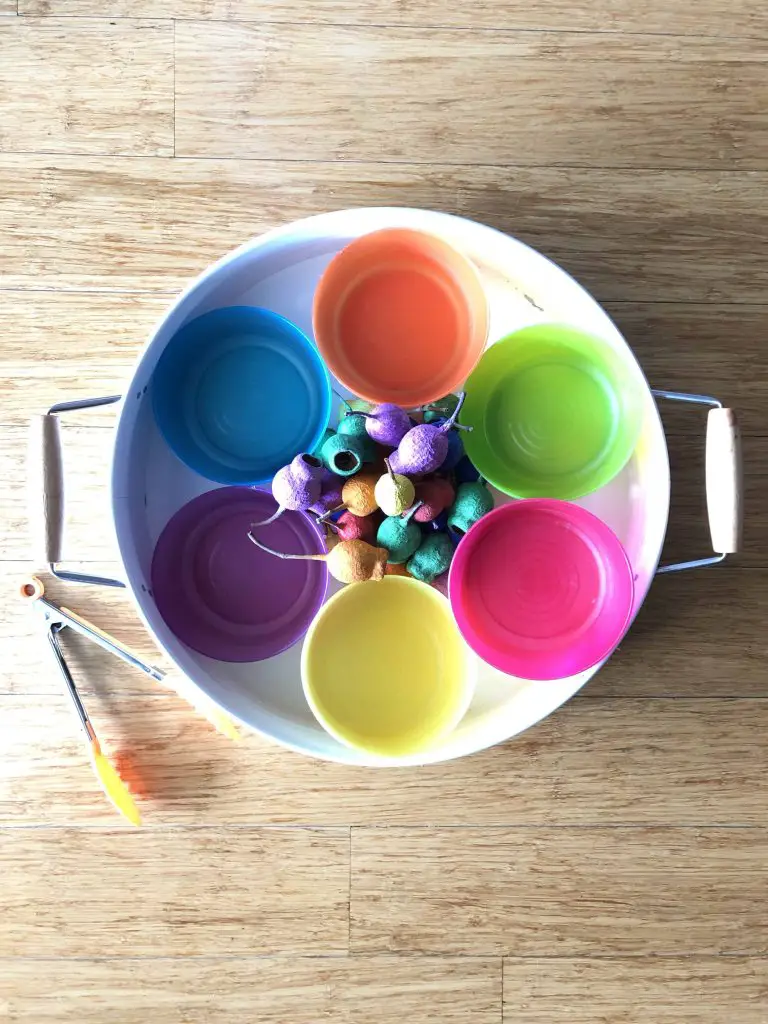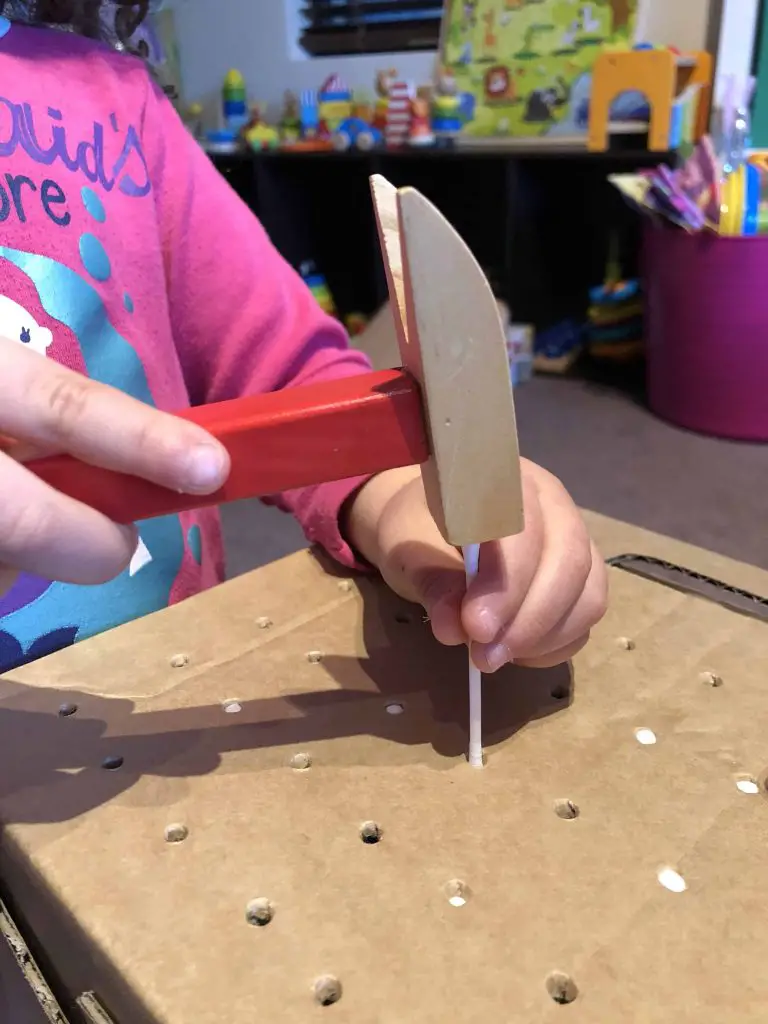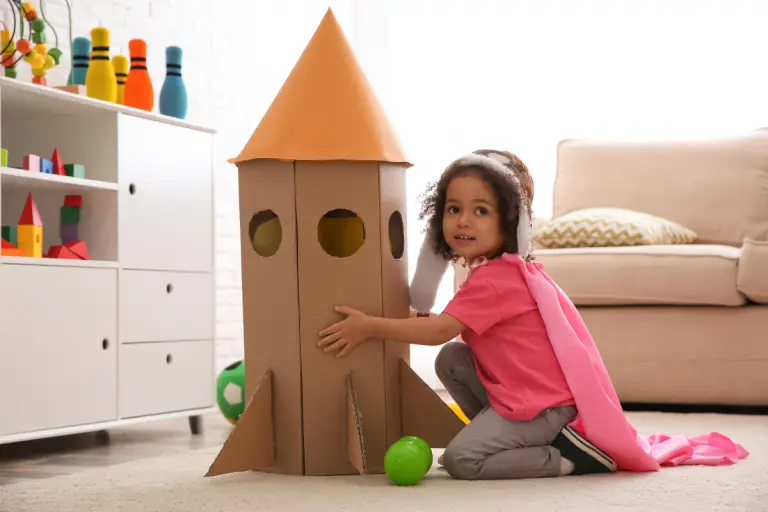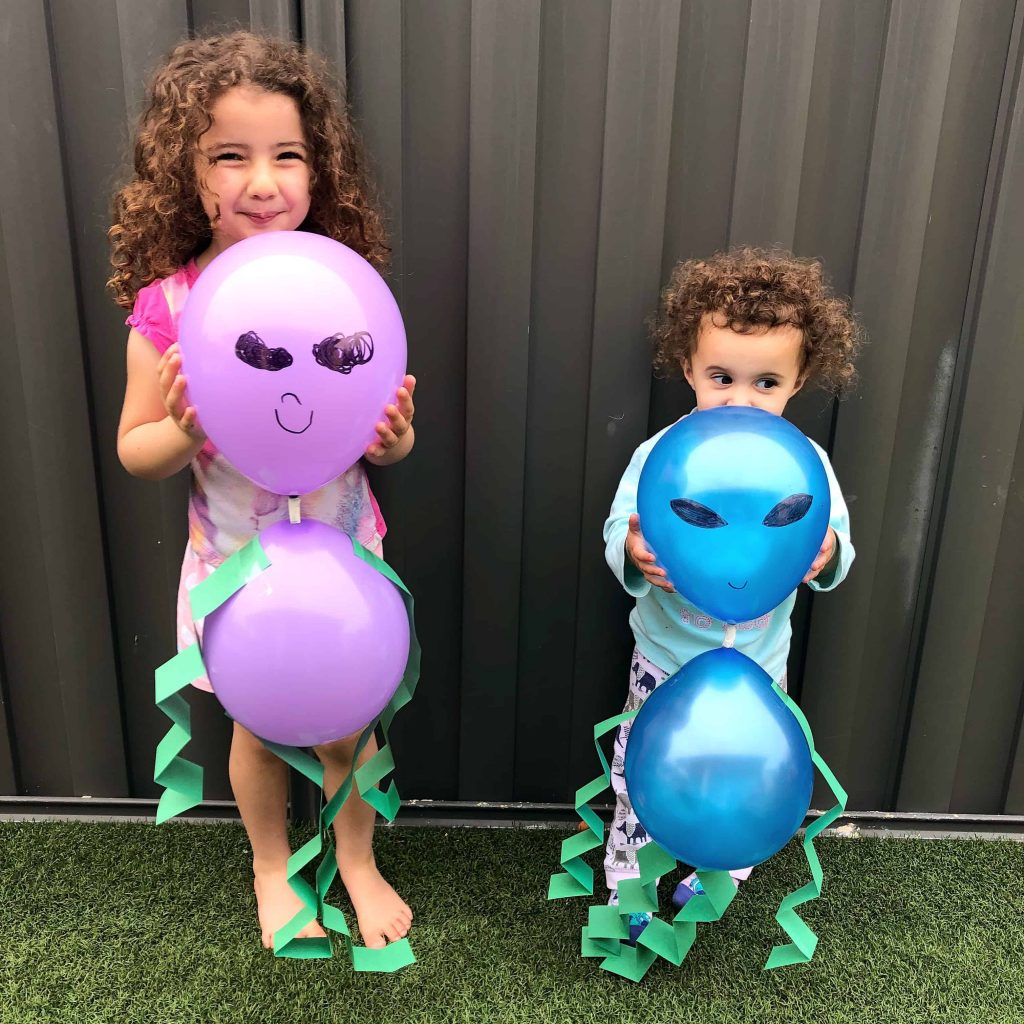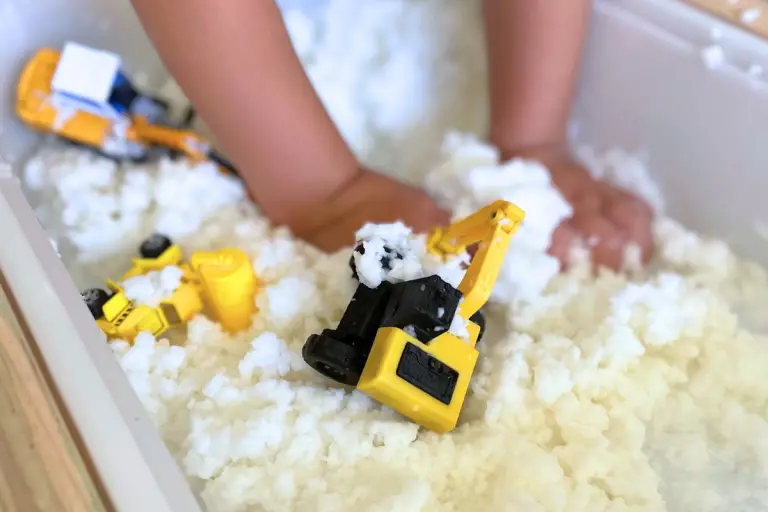Sensory Scooping: Ultimate Toddler Play Guide
Disclosure: This blog contains affiliate links which I may earn a small commission from if you purchase through them, at no extra cost to you.
Scoop and transfer activities have been a favourite go to in our play room for years and for good reason.
Within. minutes a simple and engaging sensory activity can be set up and ready to play.
These invitations to play always inspire creativity and allow for developing so many vital skills!
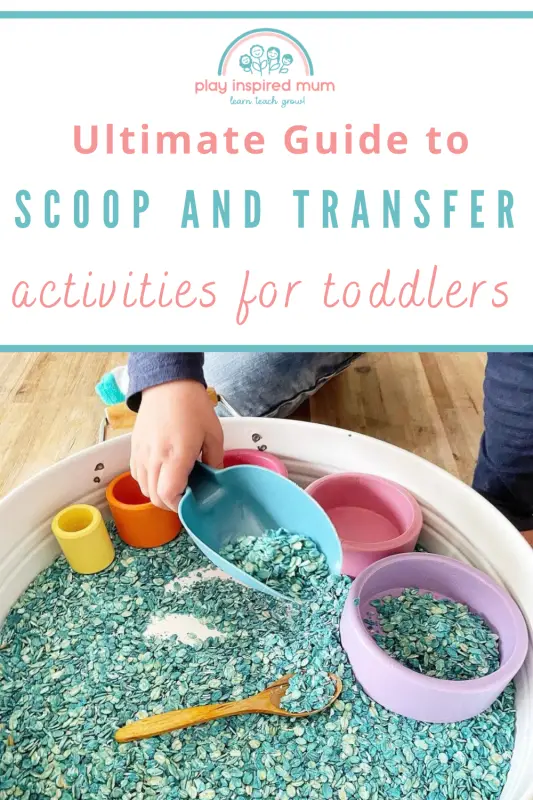
Scoop and Transfer Activities
I’ve witnessed firsthand the wonder that envelops toddlers as they dive into scoop and transfer activities.
These seem like simple play ideas on the surface.
Yet, they’re pivotal for our little ones’ holistic development.
Through scooping and pouring, young toddlers not only engage in sensory play but also hone their fine motor skills.
Understand, that this isn’t just about keeping them occupied.
It’s an educational journey, where they learn through play.
Every scoop offers a lesson in coordination, while every transfer enlightens them on the consequences of their actions.
Such activities lay the groundwork for crucial skills, including crossing the midline, a fundamental motor skill that underpins many higher-level abilities.
So, when we set up these taste-safe sensory play zones, we’re not just aiming for quick setup or messy play.
We’re carefully crafting an environment where our toddlers can explore, learn, and grow.

Benefits of Scooping and Pouring
Scooping and pouring unveiled a world of developmental adventures for my toddler.
These play-based learnings, crucial for fine motor skill enhancement, navigate through the realms of sensory play and crossing the midline exercises.
They cultivated an environment where hand dominance emerged naturally, fostering a dominant hand for my little one through repetitive and engaging activities.
The taste-safe sensory play allowed us to explore without worry, making messy play an educational journey rather than just a cleanup nightmare.
With a simple setup and quick execution, these activities brought immense joy and valuable learning experiences, proving to be fundamental in the early stages of child development.
Essential Tools for Easy Setup
Setting up a sensory scooping session for toddlers couldn’t be simpler.
I usually start with items found right at home.
Scoops, cups, or small containers work perfectly for the main tools.
For the base of our activities, rice, dried beans, or even water can provide endless fun.
These are taste-safe for young toddlers and easy on the wallet.
I make sure everything is large enough to avoid any choking hazards.
A spacious tray or a shallow box will serve as our playing field, containing the mess and making clean-up a breeze.
You’ll also want some larger objects or toys for transferring.
This adds a bit of challenge and variety.
Remember, supervision is key.
We always play together to ensure safety and model the fun of learning through play.
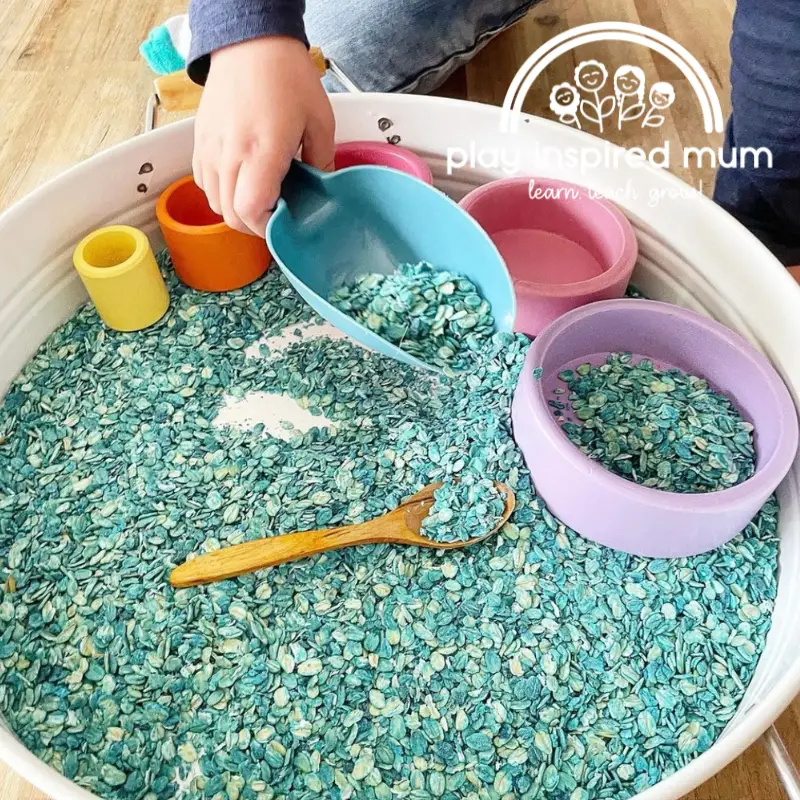
Steps for Setting Up Your First Scoop and Transfer Activities
I’ve discovered a fantastic way to engage toddlers in play that boosts their motor skills and sensory experiences. It revolves around the simple, joyous activity of scooping and pouring. Here’s how we can dive into this playful learning:
- Gather your materials: You’ll need a variety of tools such as cups, spoons, and bowls. Ensure everything is taste-safe for those curious little ones.
- Choose your base: Opt for items like rice, beans, or even water for pouring. The aim is taste-safe sensory play, so pick something harmless if ingested.
- Set your space: Pick an area easy to clean. Messy play is part of the fun, but we want a quick cleanup afterward.
- Demonstrate the activity: Show them how to scoop, pour, and transfer from one container to another. This simple set-up invites exploration and learning through play.
By embracing this setup, we embark on a journey of discovery, crossing the midline and enhancing fine motor skills through playful, educational moments.
Sensory Play and Learning
I discovered that scoop and transfer activities are a cornerstone of sensory play.
This involves toddlers in learning through play, catering not only to their curiosity but also to crucial development aspects.
These tasks, such as scooping and pouring, have opened a Pandora’s box of taste-safe sensory play options for my toddler.
Messy play became an adventure we embarked on together, exploring textures, colours, and the joy of creating chaos in a controlled environment.
Such activities allowed my little one to cross the midline seamlessly, a skill pivotal for later learning and coordination improvements.
The simplicity of setup meant we could dive into play ideas without lengthy preparations.
Through these activities, toddlers and young toddlers master fine motor skills.
They engage in an educational journey, transforming every scoop and pour into a lesson in physics, mathematics, and art, all rolled into one enjoyable package.
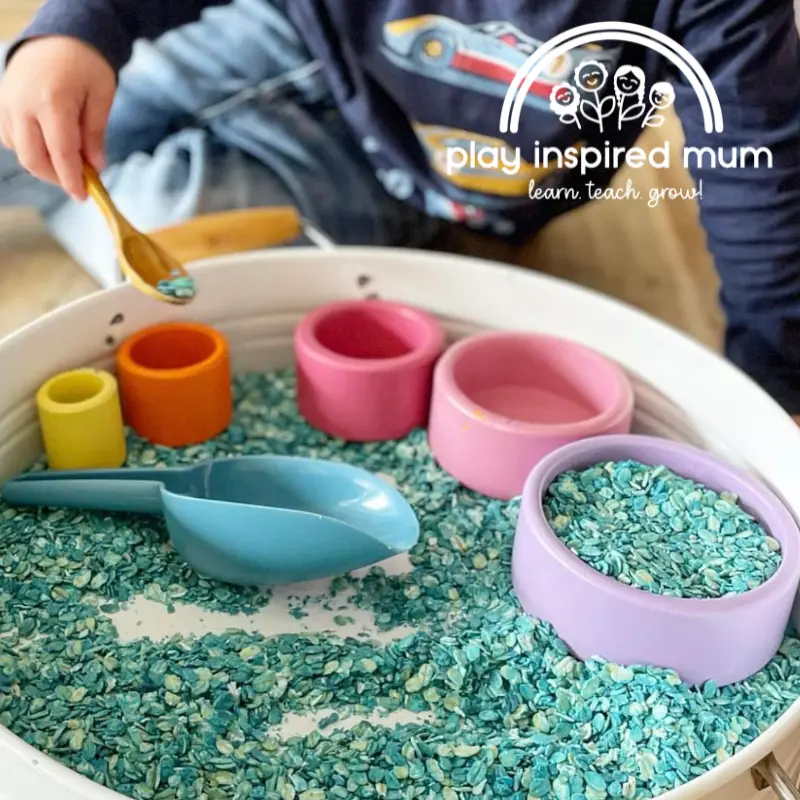
Crossing the Midline: A Key Skill
I discovered the significance of ‘crossing the midline’ for toddlers not long ago.
This pivotal skill is crucial in child development. It refers to the ability to reach across the body’s invisible line with arms and legs, intertwining brain hemispheres.
Scooping and pouring enable this through playful interaction.
Toddlers unwittingly practice this motion as they transfer materials from one side to the other.
Imagine a child engaged in sensory play.
They scoop, pour, and transfer objects, often crossing their body’s midsection.
This action strengthens their coordination and cognitive connections.
It readies them for tasks requiring bilateral coordination, such as tying shoes or handwriting.
Engaging young toddlers in these activities fosters this ability early on.
It prepares them for more complex learning and fine motor activities ahead.
Age-Appropriate Play Ideas
I discovered the joy of sensory play through scoop and pouring activities.
They became a go-to for my toddler’s playtime. Initially, we started simple, using just a few household items.
My journey expanded, exploring various play ideas suitable for toddlers and even young ones.
I found that by incorporating taste-safe sensory play, the experiences offered not only fun but also peace of mind.
For young toddlers, I kept setups quick and straightforward.
We experimented with crossing the midline exercises, using materials that encouraged them to reach across their body.
This not only supported their fine motor skills but also set the foundation for healthy brain development.
As they grew, I introduced more complex tasks.
These activities were not just about messy play but also about learning through play.
By adjusting the difficulty, the same playful tasks catered to preschooler activity needs, focusing on fine motor activity and reinforcing hand dominance.
Throughout these experiences, I maintained a focus on the importance of simple setup and cleanup.
Ensuring each play idea was engaging, educational, and manageable became my mantra.
This approach allowed us to explore sensory play thoroughly, all while making developmental leaps in fine motor skills, hand dominance, and beyond.
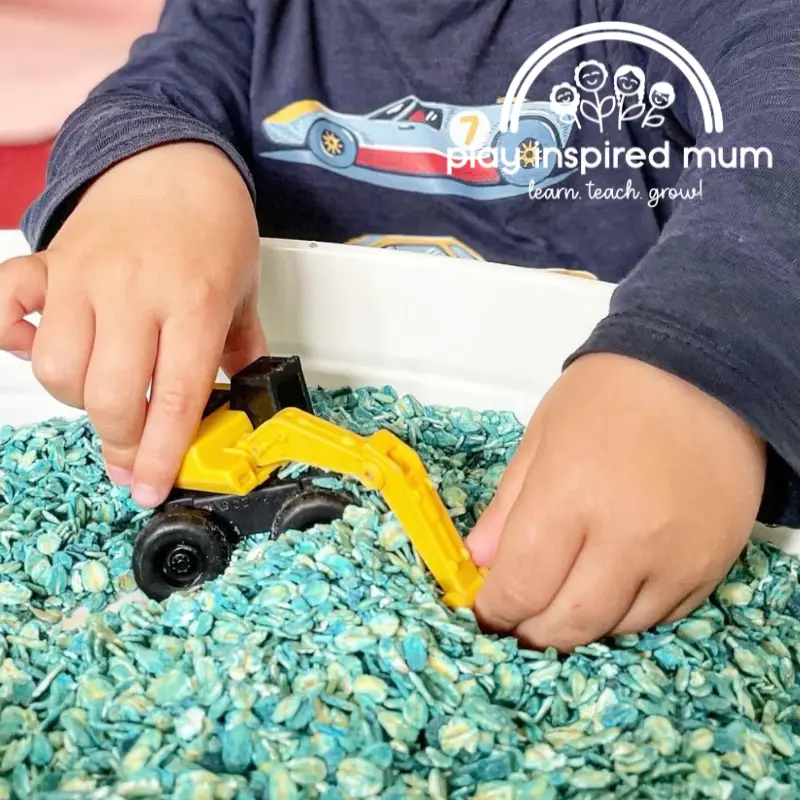
Safety Tips and Considerations
In the bustling world of toddler play, safety always comes first.
I have learned this the hard way.
My journey introduced me to the importance of taste-safe sensory play.
Through trial and error, a few key pointers stood out for ensuring our little ones stay safe while digging into the fun of scooping and pouring.
Always choose taste-safe materials.
Whether it’s for sensory play or a simple setup for fine motor activity, ensuring the materials are non-toxic and safe if ingested, brings peace of mind.
I’ve found that homemade playdough or kitchen pantry items like rice and pasta make excellent choices for worry-free playtime.
Maintain close supervision.
It’s easy for young toddlers to get carried away, potentially leading to a messy play scenario, or worse, a choking hazard.
I’ve made it a practice to stay within arm’s reach, ready to intervene if necessary.
This vigilance enables us to explore learning through play without unnecessary risks.
By prioritizing these precautions, we can craft a secure environment for our toddlers to thrive in their exploration of fine motor skills and sensory discovery.
The Joyful Journey of Scooping and Pouring
I have watched toddlers immerse themselves in scoop and transfer activities.
They showed me how simple yet profoundly engaging these play ideas can be.
They held scoops tightly, their tiny hands maneuvering cups and spoons with such focus.
It was a messy play, yes, but beneath the surface, I saw fine motor skills flowering and sensory play weaving into their young fabric of learning.
In this journey, I realized that every scoop, pour, and transfer was not just play.
It was a taste-safe sensory play, dressed as fun.
Young toddlers, without even knowing, crossed the midline, laying down neural pathways essential for their growth.
The simplicity of setting up these activities amazed me.
A few tools, often found in our everyday homes, and we were ready.
Quick setup meant we jumped into play without long waits, making the most of their fleeting attention spans.
Learning through play morphed into an everyday adventure.
We explored scooping and pouring across various textures and materials.
Each activity, catered to their age, grew with them.
From young toddlers to preschoolers, the complexity of the tasks evolved, but the essence of sensory play remained intact.
For parents looking to thread motor skills, fine motor activity, and play-based learning into the fabric of their child’s day, I can’t endorse these activities enough.
Let’s make scooping and pouring a staple in our playtime routines.
The benefits are vast, the joy contagious, and the setup, thankfully, always simple.

